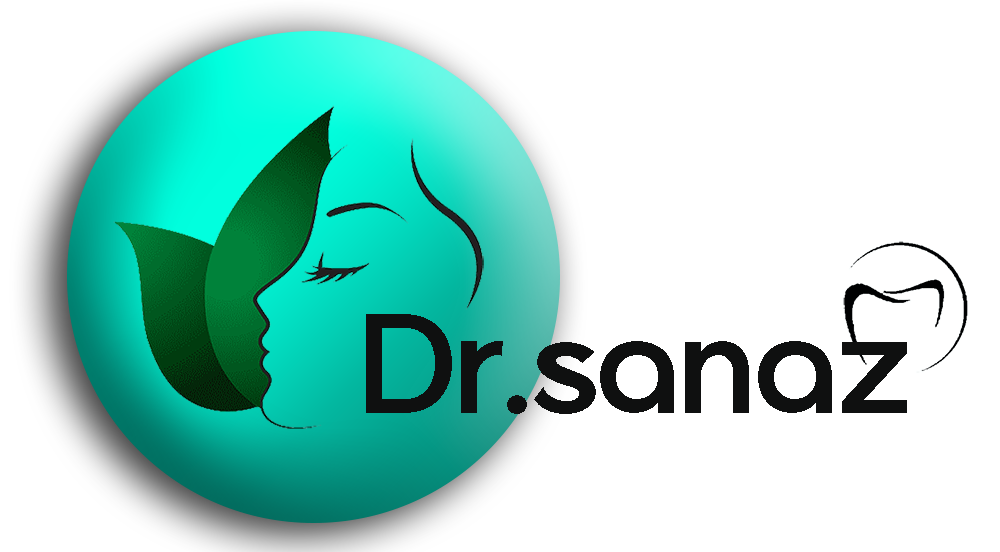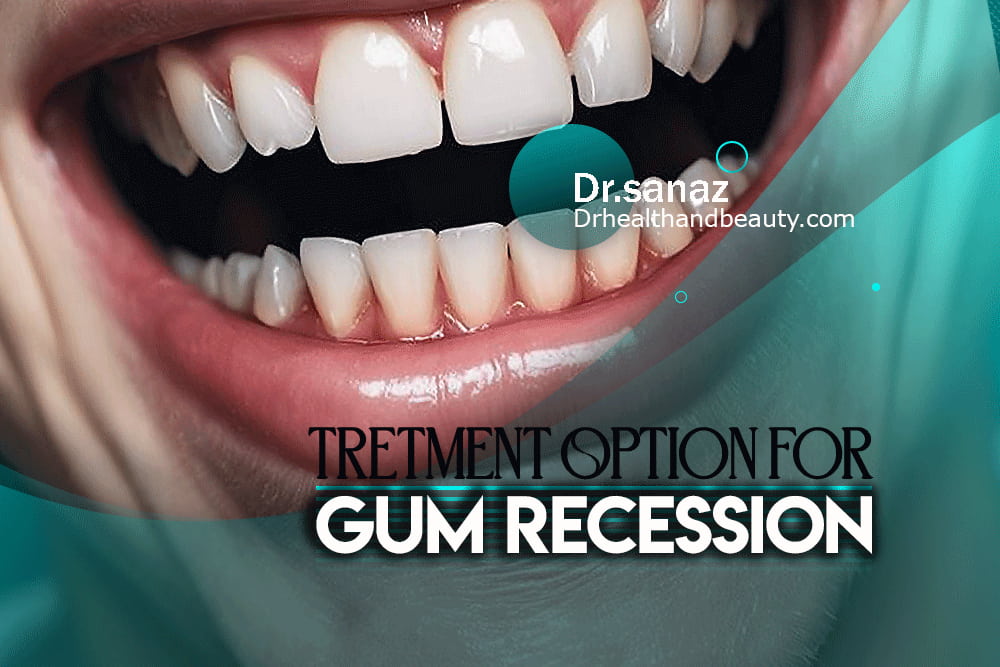

What Is The Best Method Of Scaling Teeth?
The content of this article is approved by “drhealthandbeauty” experts.
Note: This article is only to guide and increase your knowledge. Before taking any action, you can consult “drhealthandbeauty” doctors or your doctor for treatment.
Sometimes, you have an unusual feeling in your mouth that is attached to your gums without seeing a tangible complication ( due to primary dental plaque ). Or you may experience toothache or gum pain due to superficial or deep tooth decay ( caused by the formation of dental plaque). Sometimes, you may feel that your teeth have become bigger or their length has increased (problem of receding gums due to the formation of mass).
All of the above cases are cases in which you need to have your teeth scaled. And that is the result of the condition that when you eat, the bacteria in the mouth convert the carbohydrates in the food into acid. And this acid mixes with the remaining particles of food and saliva and creates plaque. And this plaque has been created, which causes problems and unusual feelings for you.
For scaling teeth, you have home methods that will be the most effective methods in some situations, and it is better to pay attention to them to save money and time. Therefore, the question “How To Scale Your Teeth At Home?” was completely logical. However, sometimes, with the development of dental caries and their conditions becoming acute, in order to get quick results for Cleaning your teeth, you will need to go to the dentist for medical and clinical methods.
In the following and in this article from drhealthandbeauty by Dr Sanaz, we will first explore the types of dental scaling methods that are performed in reputable dental clinics around the world. And we will discuss their advantages and limitation. If you want to be aware of the severe disadvantages of scaling, so we recommend reading the article “Checking: What Are The Disadvantages Of Deep Cleaning Teeth?” which is discussed in detail.
Finally, relying on my years of experience in dentistry, we will answer the question, what is the best method of scaling teeth? – Stay with me.
Table of Contents

Trying to find the best method of scaling teeth
Surface scaling: Traditional scaling by hand
Traditional scaling, also known as manual scaling, involves the use of hand tools such as scalers and burs to remove plaque and tartar on the tooth and below the gum line. In fact, the delicate head of these dental scalers places them under the gum line to reach the plaque that your toothbrush can’t reach.
This method relies on the tactile sensitivity and skill of the dental hygienist or dentist to identify and effectively remove plaque deposits. Manual scaling allows precise control and customization of the scaling process to address specific areas of concern, such as deep gingival pockets or hard-to-reach areas. While traditional manual scaling is a proven and widely used method, it can be more labour-intensive and time-consuming compared to other scaling techniques.
This method of removing dental plaque is suitable for teeth that have little plaque. For this reason, this method is also called surface mass removal.
Advantages of traditional hand scaling:
- Fine control and customization of the scaling process.
- Ability to detect and remove differential deposits effectively.
- Touch sensitivity allows for thorough cleaning of tooth surfaces and gum pockets.
- Versatility in addressing specific areas of concern, such as deep gum pockets or irregular tooth surfaces.
Limitations of traditional hand calibrating:
- Labour is intensive and time-consuming, especially for extensive or complex cases.
- It may cause discomfort or sensitivity for patients with sensitive teeth or gums.
- Limited efficiency in removing solid or hardened rock deposits.
- It requires specialized training and skill in manual scaling techniques.
.
Related: “Is Deep Cleaning Teeth Painful?“
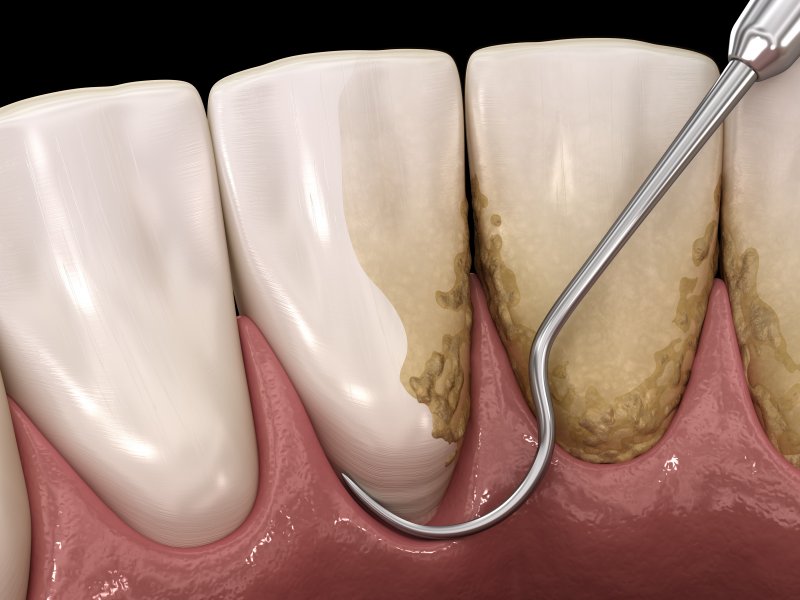
Advanced scaling: ultrasonic scaling
Ultrasonic scaling uses high-frequency vibrations generated by ultrasonic scalers to eliminate plaque and tartar deposits from tooth surfaces and below the gum line. Ultrasonic scalers have a vibrating tip that produces rapid oscillations that effectively break up scale deposits and remove debris from the treatment area.
This dental scaler has a vibrating metal tip with a cool water spray. Water spray helps to wash the plaques from the teeth and keep the device head cold. In fact, tapping the tip of the device discharges the dental plaques below the gum line.
This method offers several advantages, including improved efficiency, reduced treatment time, and increased patient comfort. Ultrasonic scaling is particularly useful for patients with heavy plaque or deep gingival pockets, as it allows for thorough cleaning without excessive manual effort.
Advantages of ultrasonic scaling:
- Increasing efficiency and reducing treatment time.
- Effective removal of stubborn stone deposits.
- Mild and mild on tooth surfaces and gum tissue.
- Reduced hand fatigue for dental professionals allows for longer treatment sessions.
Limitations of ultrasonic scaling:
- Limited tactile feedback compared to a traditional hand scale.
- Potential for aerosol generation during treatment, requiring appropriate infection control measures.
- Higher initial investment in dental practice equipment and training.
- It may cause discomfort for patients with sensitive teeth or gums, especially in higher-power settings.
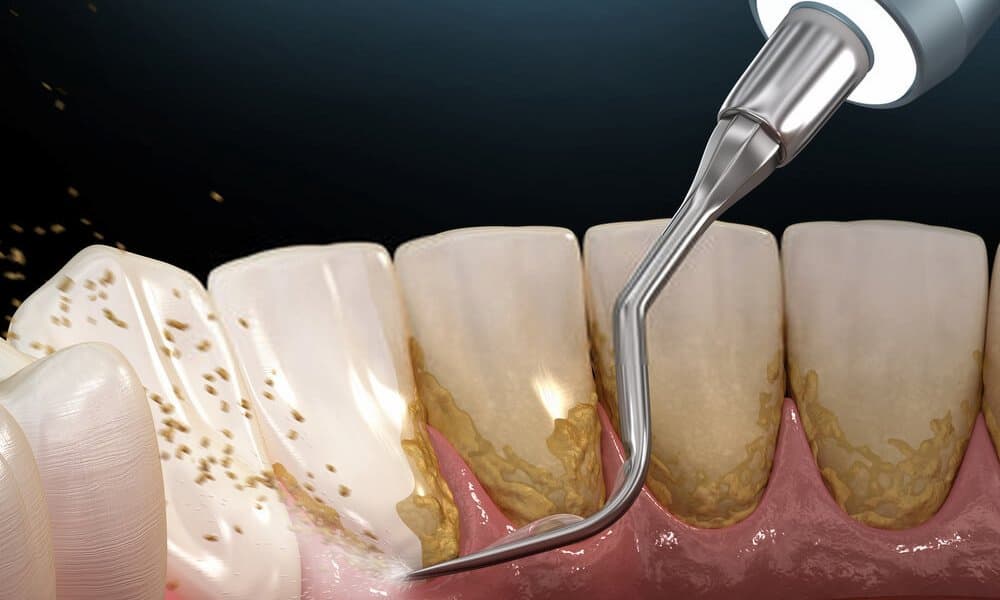
Scaling by laser:
Laser-assisted scaling, also known as laser scaling or laser tooth cleaning, uses dental lasers to remove tartar and plaque deposits from tooth surfaces and below the gum line. Dental lasers emit focused light energy that selectively targets and vaporizes plaque while minimizing damage to surrounding healthy tissue.
In this method, blue laser light is used to deep-clean gum pockets and root surfaces. Usually, after applying the whitening agent to the teeth, laser light is irradiated and dental plaques are oxidized and removed. While this technique has a high speed and is very effective in improving gingivitis. But raises the question: “Do Teeth Become Weak After Whitening?“
Laser scaling offers several advantages, including precision, sterilization of the treatment area, and potential bactericidal effects. This procedure is particularly useful for patients with periodontal disease or inflammation, as it can help reduce the bacterial load and improve gum tissue.
Advantages of laser scaling:
- Accurate targeting of rock deposits with minimal damage to surrounding tissues.
- Sterilization of the treatment area and possible bactericidal effects.
- Reduced discomfort and bleeding during treatment, leading to faster recovery.
- Potential to improve gingival tissue adhesion and periodontal health.
Limitations of laser scaling:
- Higher initial investment in laser equipment and training for dental practice.
- Limited availability and accessibility compared to traditional scaling methods.
- It requires specialized training and skill in laser safety protocols.
- Not suitable for all patients or types of stone deposits, especially large or resistant deposits.
Considerations for optimal scalability results:
- Patient comfort: Consideration of patient comfort and preferences is essential when choosing a scaling method. Patients with sensitive teeth or gums may benefit from gentler scaling techniques, such as ultrasonic scaling or laser-assisted scaling, to minimize discomfort during treatment.
Related: “What To Do With Tooth Sensitivity“
- Treatment efficiency: The efficiency and effectiveness of scaling methods should be evaluated based on the patient’s oral and dental health needs and the amount of scale accumulation. While ultrasonic scaling and laser-assisted scaling offer advantages in terms of efficiency and reduced treatment time, traditional scaling may be preferred for precise control and customization of the scaling process.
- Practitioner skill: Dental professionals should receive comprehensive training and ongoing education in scaling techniques to ensure skill and optimal treatment outcomes. Proficiency in manual scaling techniques, ultrasonic scaling instrumentation, and laser safety protocols is essential to providing high-quality dental care.
- Patient Education: Patient education and communication is essential to promote oral health and encourage active participation in preventive dental care. Dental professionals should educate patients about the importance of regular scaling sessions, proper oral hygiene practices, and lifestyle factors that have an impact on oral health.

Frequently asked questions
What is the best method of scaling teeth?
In general, one of these two methods cannot be considered superior to the other because each of them has its own advantages and disadvantages. In some cases, mass measurement is even done using ultrasonic devices along with a laser.
What is important is to remove your dental plaques, which will be helped by one method or a combination of methods.
What is the most common method of tooth scaling?
Among all the methods we have mentioned in this article, ultrasonic dental scaling is the most common scaling method.
It is better to leave this choice to your dentist. With their experience and skills, they can use one method or a combination of methods for what you need.
Which method is better for scaling composite or veneered teeth?
If you have porcelain or composite restorations, manual scaling may be a better choice for you. But if necessary, the dentist can also use ultrasonic devices with high precision.
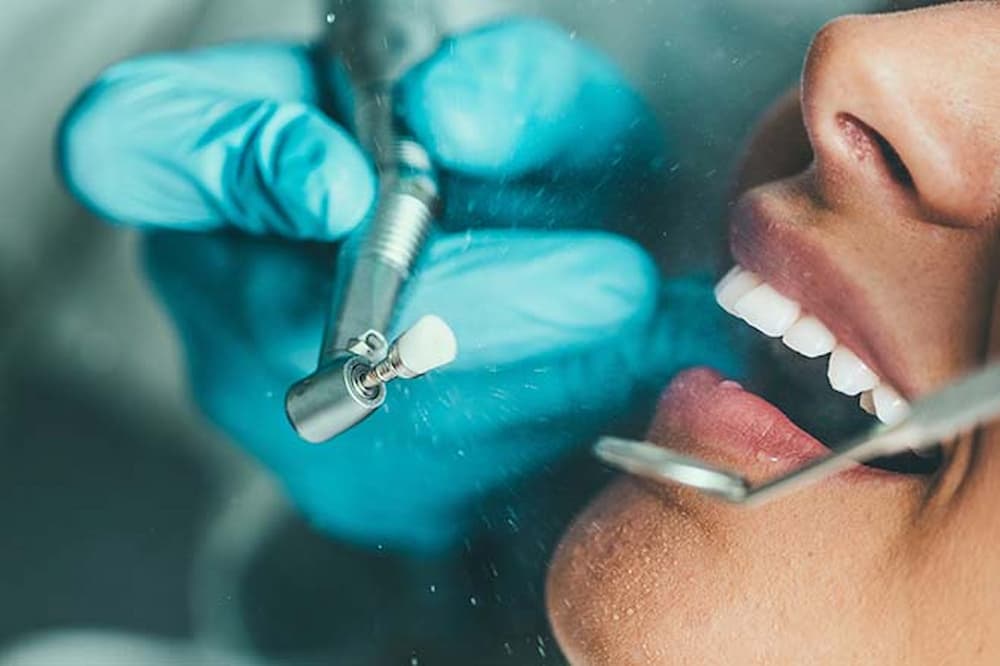
Conclusion
The best dental scaling method depends on various factors such as patient comfort, treatment efficiency, doctor’s skill and individual oral health needs.
Traditional manual scaling, ultrasonic scaling, and laser-assisted scaling each offer unique advantages and considerations for optimal results. The best way to scale the teeth is determined by the dentist after examining the condition of your teeth.
Any of the methods we introduced earlier may be used as a way to remove plaque from your teeth. By carefully evaluating these factors and with the help of dental professionals, patients can make informed decisions about their plaque treatment and Maintain oral health for years to come.
